To help people make nominations for the 2017 Hugo Award for Best Professional Artist, we have set up a "lightbox" system to let fans quickly flip through the works of over 130 artists listed below and to set aside the ones they particularly liked. Here's how it works:
When I did this myself, it took fewer than fifteen minutes to sift through the list, and I ended up with just 15 artists to choose from. It took about ten more minutes of browsing the artists' websites to cut that to five for my Best Professional Artist nominations.
WARNING: If you are on a limited data plan and view every picture in the lightbox, the full-size images come to about 90 MB total.
Note: Thumbnail images with a highlighted link are professional works done in 2016. Thumbnails without a highlighted link were done earlier (shown in last year's list), later (show in next year's list) or fan art (published in a semi-prozine) and included to give more examples of the artist's style.
Click here to jump to the artist list, or continue reading...
The artists listed below created art for professional magazines, standalone novellas, and books in 2016 that make them eligible for the 2017 Hugo Award for Best Professional Artist.
Most of the art consists of covers for magazines, anthologies, novellas, and illustrations for short fiction reviewed by Rocket Stack Rank in 2016.
Some of the art consists of book covers from the "year's best" science fiction and fantasy meta-lists collated by Brandon Kempner at Chaos Horizon, John DeNardo at Kirkus Reviews, and the Nebula Award Suggested Reading List for novels at SFWA.org Nebula list. There are many many more books and magazines published in 2016 not included here, so this list is by no means complete.
Note that the artist is the person credited as the source of the cover/jacket art. If the source is absent or is a stock photography/illustration service (such as Shutterstock or Getty Images), we name the cover/jacket designer as the artist.
For folks interested in the history this category, John Picacio (winner 2012 and 2013) wrote A Visual History of the Best Professional Artist Hugo Award Winners that's a fun read. To understand the work that goes into creating a book cover, have a look at How Could The Winds of Winter Be Published In Only Three Months? For an in-depth look at creating covers for a series, read Lauren Panepinto's 13-part post on David Dalglish's Shadowdance series.
Go back to the 2017 Hugo Awards.
- In the artist list below, click on a thumbnail image. The lighbox should open, showing a larger image of the work.
- If you like the picture, ctrl-click (or long-press) the artist's name above it. That will reopen this page in a new tab with that artist's information at the top.
- Press the right-arrow key (or tap the picture) to advance to the next picture. Each new artist is preceded by the Hugo Award image.
- Once you've looked at all the pictures, go through the tabs you opened. For most artists there's a link to his/her website where you can find a gallery of their work.
- Browse the gallery and see if the picture you liked was representative of their work as a whole.
- Close the tabs of the ones you liked least.
When I did this myself, it took fewer than fifteen minutes to sift through the list, and I ended up with just 15 artists to choose from. It took about ten more minutes of browsing the artists' websites to cut that to five for my Best Professional Artist nominations.
WARNING: If you are on a limited data plan and view every picture in the lightbox, the full-size images come to about 90 MB total.
Note: Thumbnail images with a highlighted link are professional works done in 2016. Thumbnails without a highlighted link were done earlier (shown in last year's list), later (show in next year's list) or fan art (published in a semi-prozine) and included to give more examples of the artist's style.
Click here to jump to the artist list, or continue reading...
How Did We Choose These Artists?
Most of the art consists of covers for magazines, anthologies, novellas, and illustrations for short fiction reviewed by Rocket Stack Rank in 2016.
Some of the art consists of book covers from the "year's best" science fiction and fantasy meta-lists collated by Brandon Kempner at Chaos Horizon, John DeNardo at Kirkus Reviews, and the Nebula Award Suggested Reading List for novels at SFWA.org Nebula list. There are many many more books and magazines published in 2016 not included here, so this list is by no means complete.
Note that the artist is the person credited as the source of the cover/jacket art. If the source is absent or is a stock photography/illustration service (such as Shutterstock or Getty Images), we name the cover/jacket designer as the artist.
For folks interested in the history this category, John Picacio (winner 2012 and 2013) wrote A Visual History of the Best Professional Artist Hugo Award Winners that's a fun read. To understand the work that goes into creating a book cover, have a look at How Could The Winds of Winter Be Published In Only Three Months? For an in-depth look at creating covers for a series, read Lauren Panepinto's 13-part post on David Dalglish's Shadowdance series.
Go back to the 2017 Hugo Awards.





















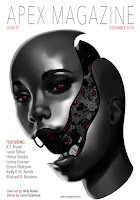

























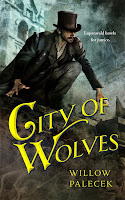
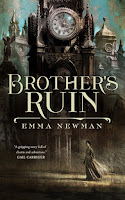




































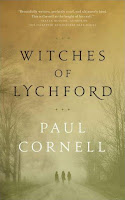






























































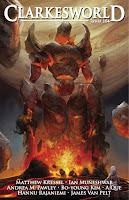














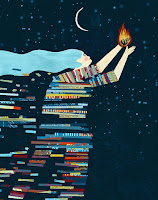









































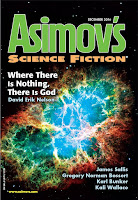




























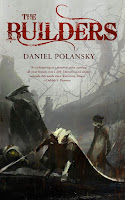






































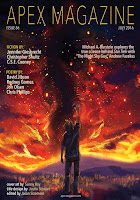








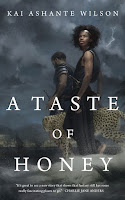












































If the art itself is from earlier, but is used for a 2016 cover does it count as 2016 work? I know some of the magazines (Apex, Clarkesworld) don't comission new cover art, but buy existing pieces.
ReplyDeleteA Hugo Awards post on the definition of professional says "Best Professional Artist: qualifying work must appear in a professional publication" which makes me think date of first pro publication matters, not date of creation. Here's an example of an artwork (unknown creation date) first used for a magazine and then a novel a month later.
DeleteThanks for the response. I guess this shows a reason in favor of the art categories being for a person's work for the year and not specific works. My question came to mind because I recognize a few things as earlier work. For example, the new Uncanny cover is one of John Picacio's Loteria Grande cards which have been around for a while. (Of course, that's a 2017 semi-prozine so it's neither here nor there in this case.)
ReplyDeleteThanks for the reference. A search for John Picacio Loteria turned up beautiful images. What a cool way to see an artist's portfolio. :-)
DeleteThank-you for doing this. I'd already pretty much made up my mind about who I was nominating in this category, but it is an excellent and easy way to have another look, just to be sure.
ReplyDeleteFor Best Professional Artist, I’ve been pushing the team of US artist Xin Ye and Finnish artist Lauri Ahonen for their joint work on Erfworld – see the wiki page at http://hugonoms2017.wikia.com/wiki/Xin_Ye_and_Lauri_Ahonen. I’ve addressed a number of issues there, such as whether a team nomination is legal (there’s precedent for it, but we won’t get a formal ruling unless they get enough nominations to make the finalists) and how to do it (put them both on the same line of the nomination ballot), along with a list of some particularly notable images from 2016.
ReplyDeleteI’ve been amazed by the quality of their work since they started working together as a team, and I also think it would be really cool if we could have a Finnish artist on the ballot for the Helsinki Worldcon. Erfworld Book 3 won’t be eligible in the Graphic Work category until next year (serially published works are eligible in the year the last installment is published, and it is still being published at 2 pages a week), but we can still recognize them as artists for the pages they illustrated that were published in 2016.
So Erfworld actually has paid staff? (Otherwise it's not a prozine under 3.2.10.)
Delete